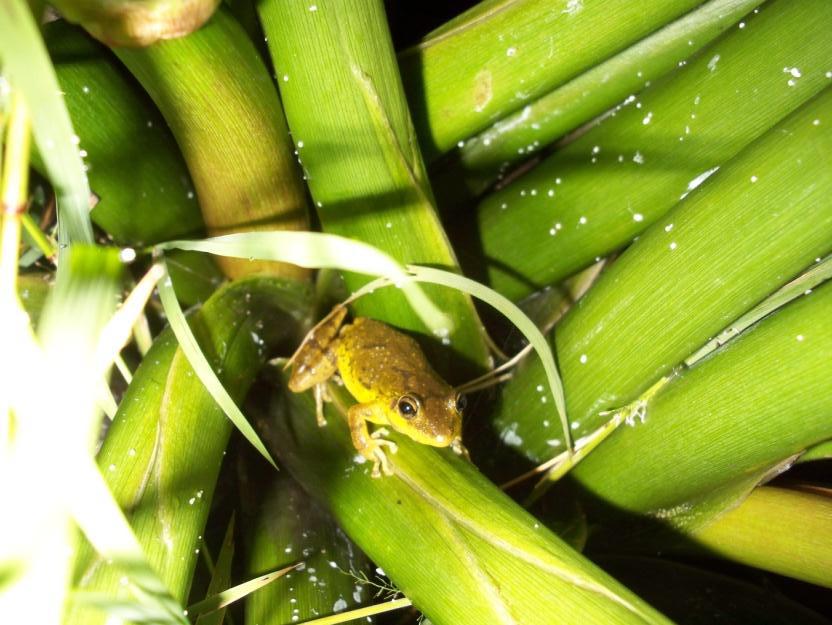Lucia Ziegler
The aim of the project is to conduct acoustic surveys throughout Uruguay to fill in gaps in information about anuran diversity, which will then be transferred to the community, promoting its involvement in conservation.
Amphibians are experiencing a worldwide decline in number of species. This has been being well reported in the literature since the late 80s, while it seems to be a complex and multicausal issue. This situation is still far from being controlled, and researchers have been called to make their best effort towards the conservation amphibian fauna worldwide.

Uruguay has a relatively high number of amphibians (47 species) if we consider its small territory (only 186.926 km2). Out of this 47 species, 7 (15%) have been discovered/cited for the country in the last ten years. One of these newly cited species is the American Bullfrog (Lithobates catesbeianus), which is included in IUCN’s list of the hundred top invasive species. Regarding the conservation status of the Uruguayan amphibian fauna, numbers have recently been reported as follows: a) 7 species categorized as Critically Endangered (14.9%, which nearly doubles the global average); b) another 10.6% (5 species) as Endangered, c) 2 data deficient species (4.3 %, although there are at least another four species without records for more than 20 years). Also, many areas of the country have traditionally been underrepresented both in field studies and scientific collections of the country. This represents an important gap in our knowledge, and hinders the country’s conservation efforts for this taxon.
Species presence will be assessed by male calls when they are reproductively active. Density can be evaluated at the same time, using and anuran density index developed for choruses. These measures (presence and density) are taken during short visits (15 to 30 minutes) to sites where amphibians are found calling (e.g. ponds, wetlands, streams). It is expected that some calls may not be recognized or matched to any species. Therefore, individuals will be spotted, identified morphologically and matched to their call. Surveys will be conducted with a particular interest in areas underrepresented in checklists and reports, in order to obtain the maximum amount of new information possible.
Finally, the data derived from this project will constitute a baseline for amphibian monitoring in the country. This is of particular interest for different reasons: the methodology has been widely used for biodiversity assessments, representing a low-cost, small working force technique. Also, bioacoustics surveys are easy to develop without much training. Therefore, the information collected by the realization of this project can be easily transferred to the community, promoting its involvement through the development of community-based monitoring programs.